Apple iPad Air 4, the Pro in all but name
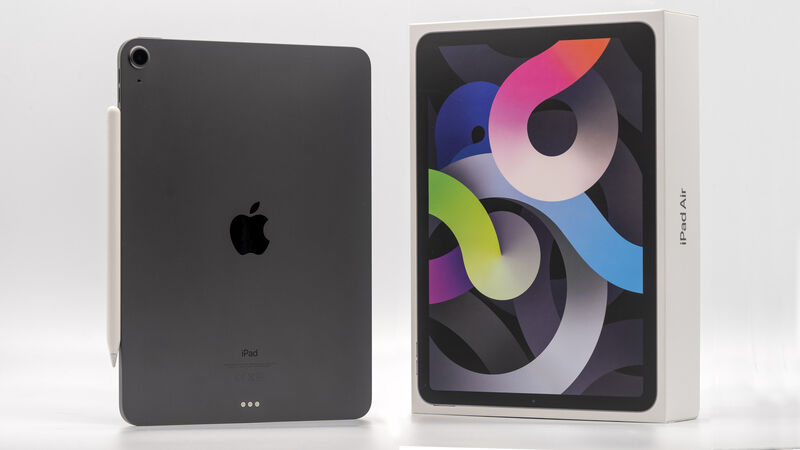
Apple iPad Air 4
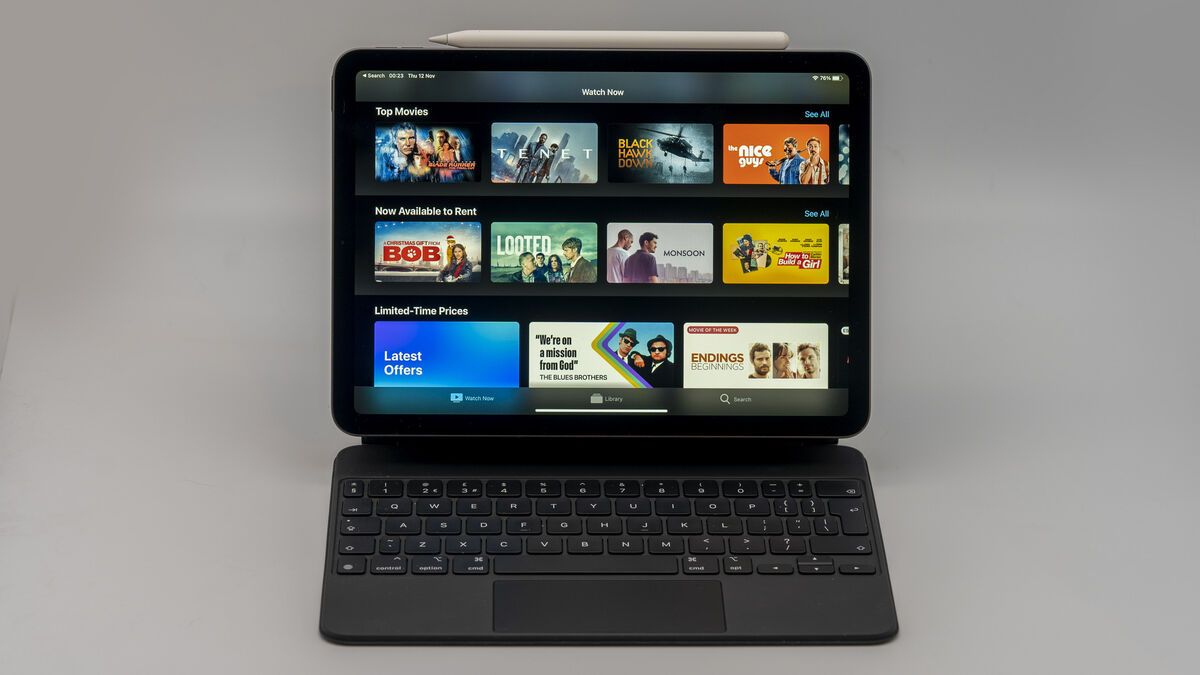
The 2020 iPad Air 4 is now thinner and sleeker, adopting the shape and form of the iPad Pro. It has the same frame with flat sides just like the new iPhones 12 and they come in more colours — silver, space grey, rose gold, green and sky blue.
Its chassis is made from 100% recycled aluminium and it looks and feels just as premium as the Pro models.
Since the Air 4 is the same size as the smaller iPad Pro, it can use the same accessories including the Smart Keyboard Folio and excellent Magic Keyboard. The latter has its own USB-C port for pass-through charging, comes with a backlit keyboard and also a built-in trackpad. All of these accessories snap-on magnetically, thanks to magnets built into the iPad using Apple’s three-pin smart connector to power them.
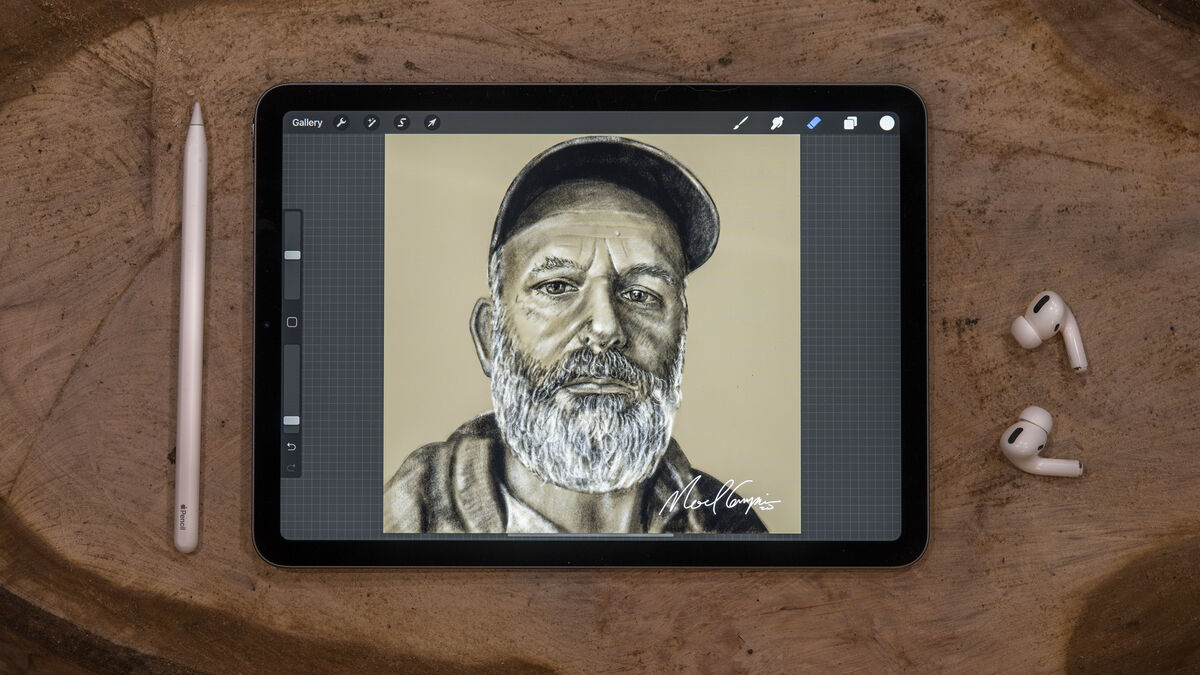
From an artist point of view, the Air is an excellent tool for creating digital art. I’m a big fan of apps like Procreate, but there are lots of other apps that do an incredible job of providing tools that make it possible for anyone to doodle or create high-end finished artwork for professional work.
In my testing, where I compared the 2020 iPad Pro against the iPad Air 4, I could see a visible difference in lag while using the Apple Pencil. However, in real-world use, while using large paintbrushes in Procreate or handwriting in Apple Notes I didn’t feel any lag or ever felt I was missing out while using the Air 4.
The smaller size makes it easier to draw while holding it in my hands or lap over my iPad Pro 12.9.
The Apple Pencil is a game-changer for artists and it's fantastic that the Air 4 uses the second generation and not the original. I prefer using it over the original because it’s got a matte texture which doesn't slip and I found it more comfortable to hold. Also, it wirelessly charges when you place it on the edge of the iPad where it magnetically connects, so it’s always charged and ready to use.
Palm rejection is something that’s partly down to the software but also hardware and all of the iPads do this better than any other tablet I’ve tried and the iPad Air 4 is no exception.
The 10.9-inch display is a good balance of having a tablet that’s easy to manage while being big enough to draw on. However, although I really loved using the iPad Air 4 for drawing and didn’t find it limiting, I still prefer the larger 12.9-inch screen on my iPad Pro.
Every iPad, from the least expensive to the top-of-the-range Pro models are fantastic gaming devices. This is more especially true now that you can use Bluetooth controllers and a reasonably priced gaming subscription service like Apple Arcade (€5 per month).
So, how good is the iPad Air 4 for gaming? Well, excellent thanks to a stereo speaker setup (one on either side) the large display and the powerful A14 Bionic processor. Every game I tried plays incredibly smooth and fast. However, despite benchmarking software providing better gaming scores than the iPad Pro 2020, I did notice frame rates were not as good on the Air 4 in some of the more taxing games. Perhaps this could be down to the extra RAM of the Pro or the 120Hz refresh rate. I also love the extra bass and sound you get from the iPad Pro’s quad-speaker setup.
In isolation, the iPad Air 4 is excellent and I don’t think anyone will be disappointed if gaming is important to them.
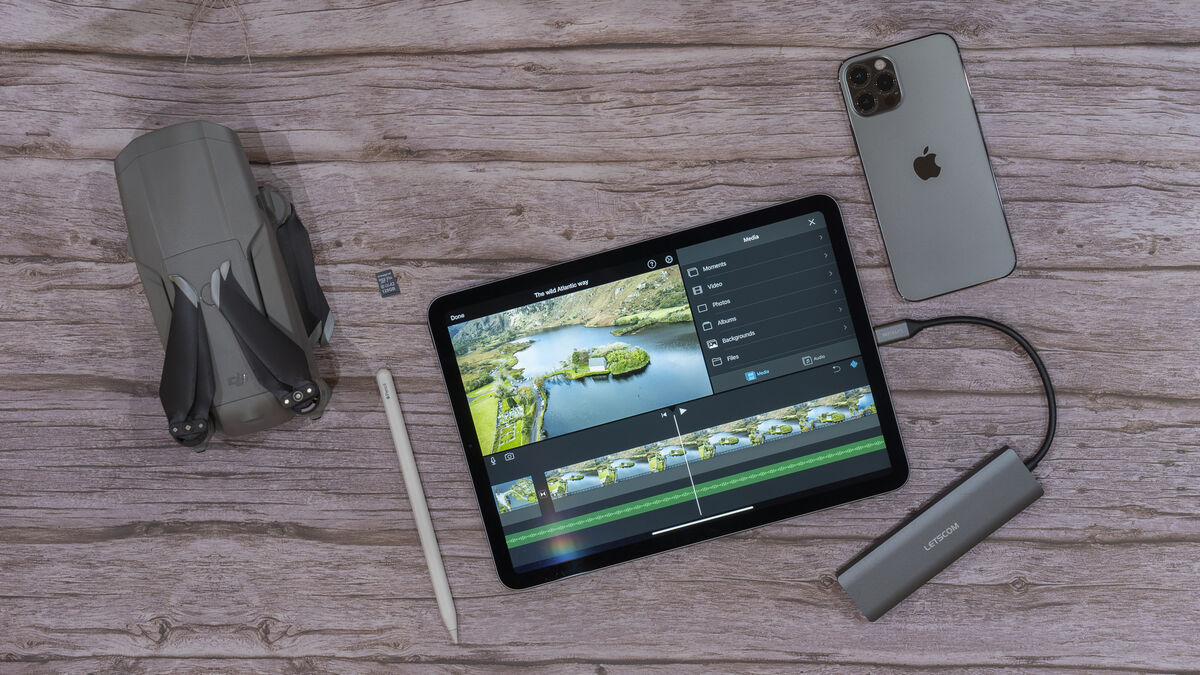
One of the things the new iPad Air 4 does well, is import and edit video. Now upgraded to USB-C means I can easily import files. Of course, this was always possible but now thanks to the USB-C port you have lots of choices when it comes to dongles that come with HDMI, USB-A, Ethernet, USB-C, SD and microSD card slots and so on.
Importing files is quick thanks to the fast 5Gbs speeds although this is half the speed of the USB-C port on the Pro models.
Using iMovie, I imported a load of 4K drone footage and edited a movie, which included titles, music and simple crossfade transitions. I exported the movie which was 9 minutes 44 second in length and it rendered the video in a respectable 6 minutes and 22 seconds.
The iPad Air is an incredible tool for drone enthusiasts too. I’ve used it with my DJI Air 2 as a monitor and it’s brilliant. It’s also nice to be able to import the video files and then edit them to save for viewing later or share online. It’s small and easy to carry and thanks to the excellent battery, I don’t need to bring extra charging bricks with me.
What I really love while using iMove and Luma Fusion for video editing is the ability to extend my preview window to a large 4K monitor using a USB-C dongle with HDMI out. Most of the time it will just mirror what’s on your iPad screen including the aspect ratio. However, when you play video from apps like Disney+, Netflix, Amazon Prime or Apple TV it will fill the second screen, but only at 2560x1440 and not the native 4K screen resolution. Strangely, when playing videos on YouTube using the iOS app it didn’t fill the screen.
Being able to hook the iPad Air 4 up to a secondary display is ideal for educational purposes as well as just being handy to watch your favourite shows on a bigger screen.
On a Mac, you can use Sidecar to enable the iPad as a second screen or software like DuetDisplay on a PC.
I love the iPad for organising and editing my RAW photos in Lightroom. The app is near desktop-class in terms of features and you can do 99% of things you can on the full-fat desktop app. Although the A14 Bionic had no problems zipping through my 60MP RAW files, the maximum storage options for the Air 4 is 256GB (64GB on the base model) although you can save these files to the Adobe Cloud or Apple’s iCloud for archiving and backup.
Adobe PhotoShop is my photo editing software of choice, but unfortunately, the iPad version is a big letdown and instead, I mostly use Affinity Photo, which is excellent and fully featured. PhotoShop has improved with updates but hopefully, Adobe eventually, give it the full desktop treatment on iPad OS, but until then you’re better off sticking with the far better alternatives like Affinity Photo.
The iPad Air 4 is now compatible with the second-generation Apple Pencil and this makes editing photos so much easier. Being able to dodge and burn or adjust sliders with the Pencil is far more organic and precise in apps like Lightroom and Affinity Photo.
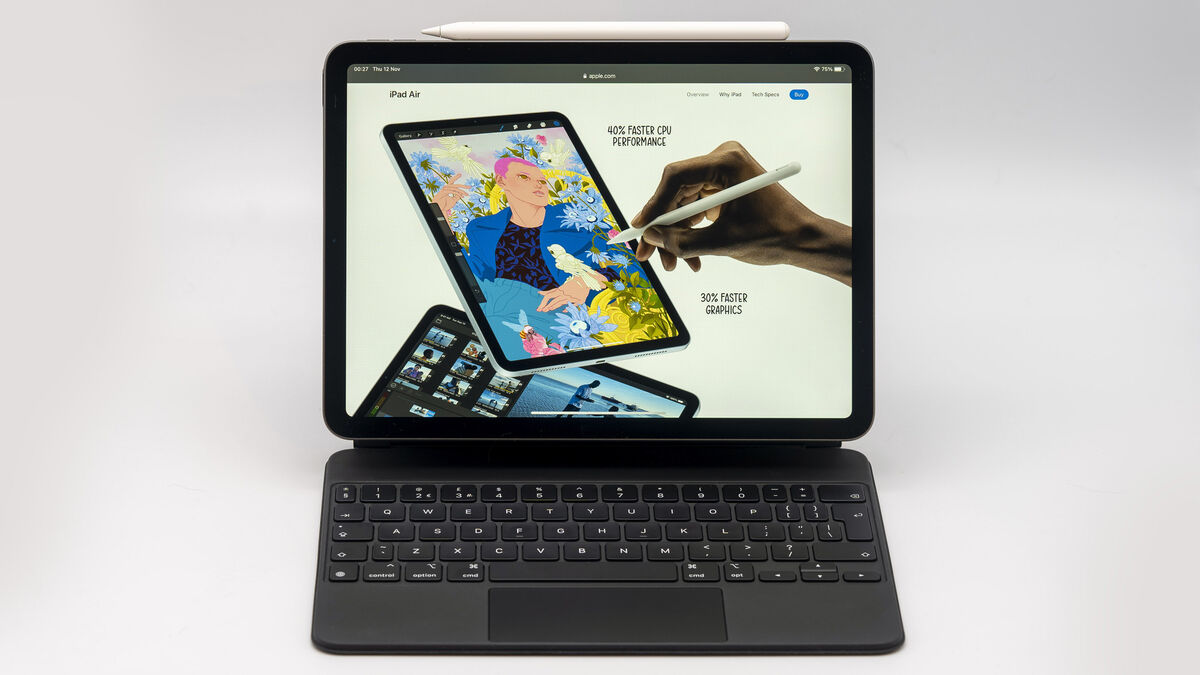
As you’d expect from an Apple display the 10.9-inch IPS screen is stunning and provides full support for P3 colour. It can get plenty bright but not as bright as the iPad Pro. It’s also worth noting that it has a 60hz refresh rate and not the 120Hz ProMotion display found on the Pro models. It’s not as smooth in animations, transitions, swiping through the home page or scrolling through web pages and social media feeds when directly compared to Pro. Again, in isolation, nobody will notice this difference and in every other way, the iPad Air 4 is stunning fast and smooth.
There's no parallax thanks to the display being laminated, so there’s no gap between glass and display like there is on the base iPad. This does make a difference when you use the Pencil for taking notes and drawing.
The display is glossy which is great for clarity and contrast but I’ve found using a matte screen protector a game-changer for handwriting and more especially, drawing. The texture makes it easier to draw with precision. However, this is a subjective point of view and not an essential optional extra.
The smaller size and weight of the iPad Air 4 makes it an ideal tool for those who take a lot of notes or like to sketch ideas. I use several apps for this and I never have to worry about losing or finding my notes. Of course, it’s also excellent for typing on using either the Smart Keyboard Folio or Magic keyboards. The latter turns the iPad into a laptop and although expensive, is well worth it if you need to do a lot of typing and like using a trackpad.
Being able to select blocks of handwritten text like you would on a Word document or copying your handwriting in text is such a powerful tool. With the new Scribble feature on iPad OS 14, you can also use your Apple Pencil to write on any text field.
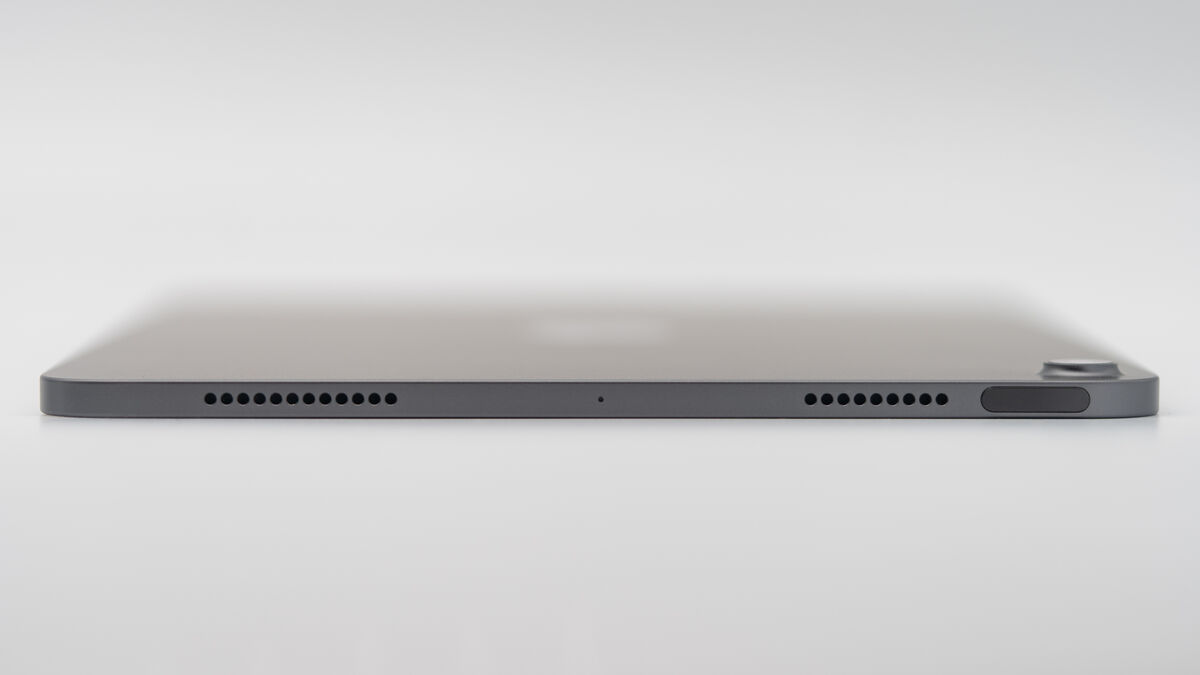
Unlike the Pro models, there’s no Face ID. Instead, Apple has placed a Touch ID fingerprint reader into the power button. It works well but I did find it a little slower to use than Face IDs look and swipe up to unlock.
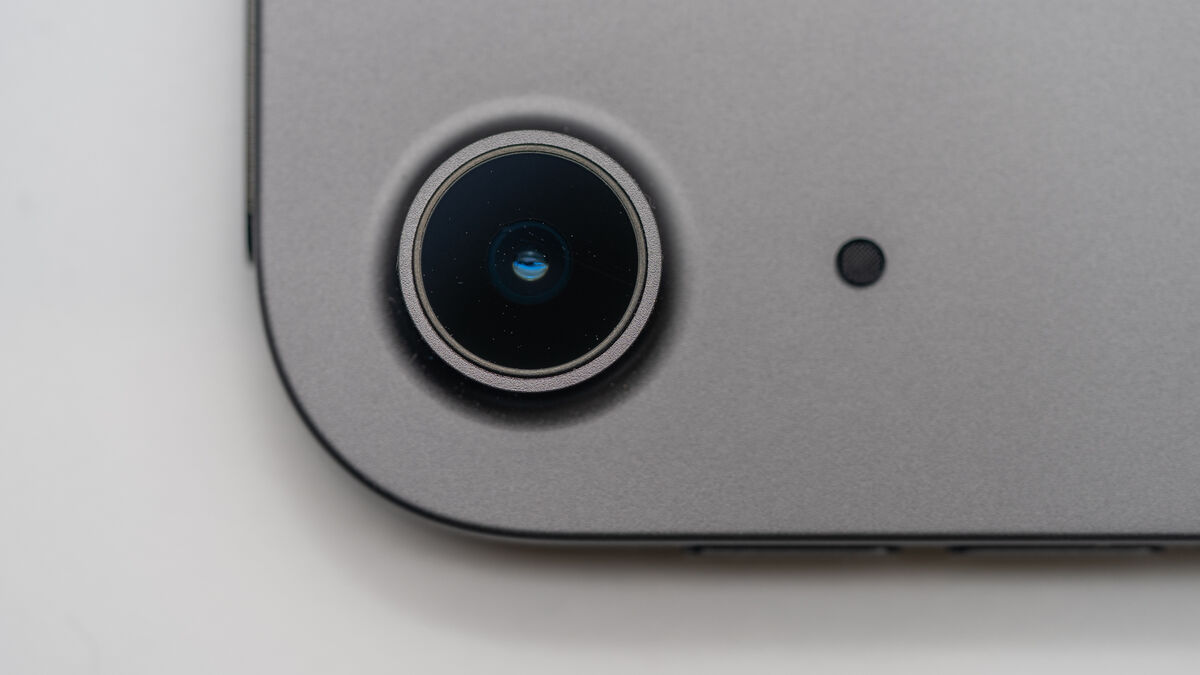
The iPad Air has a much improved 12MP wide-angle camera, the same one that's on the iPad Pro which can capture video up to 4K at 60FPS. However, there’s only one and you also don’t get the Lidar scanner or flash found on the Pro models. Around the front, there's a 7MP selfie camera with HDR functionality and better low light performance. The video quality is superb for video calls, especially if you’re using FaceTime.
The iPad Air 4 is a powerhouse thanks to the A14 Bionic chip, the world's first five-nanometer processor. Apple claims a 40% increase in CPU performance, 30% faster graphics and 10% faster machine learning versus the previous iPad.
The iPad Air 4 comes in wifi only and cellular models with wifi 6 supported. The cellular variants come with LTE/4G support.
Unfortunately, the iPad Air 4 has ditched the 3.5mm jack. The new stereo speakers go a long way to making up for this and most of us now use Bluetooth headphones.
The iPad Air 4 fits nicely between the iPad and the iPad Pro. I’d still recommend the standard iPad for the majority of people who just need a fantastic tablet for everyday use. The iPad Air 4 is close to being a Pro, but it’s the sum of the small parts that Apple left out that distinguishes it from the Pro models, which are due to get an upgrade next year. Only you can decide which model suits your needs but it’s hard to go wrong no matter which model you decide to buy.






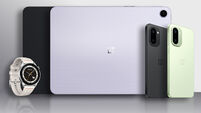





![Johnny_Stephens_Photography-02-425A6831-Edit[1].jpg Restaurant review: The Ivy Asia is an assault on all five senses — I hated it](/cms_media/module_img/9752/4876311_6_teasersmall_Johnny_Stephens_Photography-02-425A6831-Edit_5b1_5d.jpg)